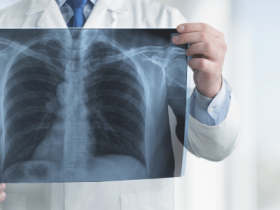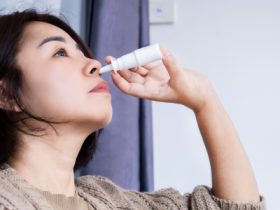Environmental factors, such as air pollution exposure, have been associated with an increased risk of chronic rhinosinusitis. Genetic predisposition to chronic rhinosinusitis has also been demonstrated, but its contribution to the development of the disease has not been completely elucidated.
During the 2024 American Rhinologic Society (ARS) meeting at the COSM, which took place in Chicago on May 15-16, 2024, Murugappan Ramanathan, MD, FARS from Johns Hopkins School of Medicine and his collaborators presented data that shed light on the role of genetic predisposition in the relationship between air pollution exposure and the risk of developing chronic rhinosinusitis.
Chronic rhinosinusitis is characterized by chronic inflammation that affects the sinonasal cavities for at least 12 weeks and presents with both objective and subjective findings. It has considerable negative impact on patients’ quality of life, and, in the United States, its prevalence has been estimated to be in the 13.8%–22.1% range.
Environmental factors have been shown to play a role in the etiology of chronic rhinosinusitis. Pollutants promote inflammation in the upper airways, and a correlation has been identified between air pollution exposure and the risk of chronic rhinosinusitis. However, not every individual exposed to air pollution will develop chronic rhinosinusitis, suggesting a role for genetic predisposition. Even though single nucleotide polymorphisms (SNPs) associated with an elevated risk of chronic rhinosinusitis have been identified, a polygenic risk score that assesses the effect of multiple genetic variants on an individual phenotype would provide greater insight into the genetic predisposition to chronic rhinosinusitis.
Dr. Ramanathan and his collaborators reported the findings of a large cohort study involving 369,489 individuals from the United Kingdom Biobank who were prospectively followed up for over 15 years (between March 2006 and October 2021). Study participants without a diagnosis of chronic rhinosinusitis were enrolled and were followed up until a diagnosis of chronic rhinosinusitis, loss to follow up, death, or the end of the follow up in 2021. Air pollution metrics, including PM2.5, PMcoarse, PM10, NOx, and NO2, were recorded at residential locations, accounting for traffic, land use, and topography and with resolution 100 meters ´ 100 meters. Next, the association between air pollution exposure and the risk of developing chronic rhinosinusitis, chronic rhinosinusitis with nasal polyps, or chronic rhinosinusitis without nasal polyps during the follow-up period was evaluated. A polygenic risk score was also calculated to examine the role of genetic predisposition in the relationship between air pollution exposure and chronic rhinosinusitis. The polygenic score included five SNPs, which were selected based on previous publications demonstrating their association with the risk of chronic rhinosinusitis.
Long-term exposure to air pollution, including exposure to PM2.5, PM10, and NO2, significantly elevated the risk of developing chronic rhinosinusitis. In addition, individuals with high genetic predisposition to chronic rhinosinusitis demonstrated an amplified risk when exposed to air pollution. This interactive effect between genetic predisposition and air pollution was particularly pronounced in individuals who developed chronic rhinosinusitis with nasal polyps.
The findings demonstrate that long-term exposure to air pollution elevates the risk of chronic rhinosinusitis, and especially chronic rhinosinusitis with nasal polyps. Moreover, this was the first study to demonstrate that the association between air pollution exposure and chronic rhinosinusitis is amplified by genetic predisposition.
These data from one of the largest cohort studies of its type underscore the need for further research on the genetic factors implicated in the predisposition to chronic rhinosinusitis and for development of novel therapeutic strategies. In addition, they emphasize the importance of establishing multifaceted public health strategies to improve air quality, including air initiatives and environmental regulations.






